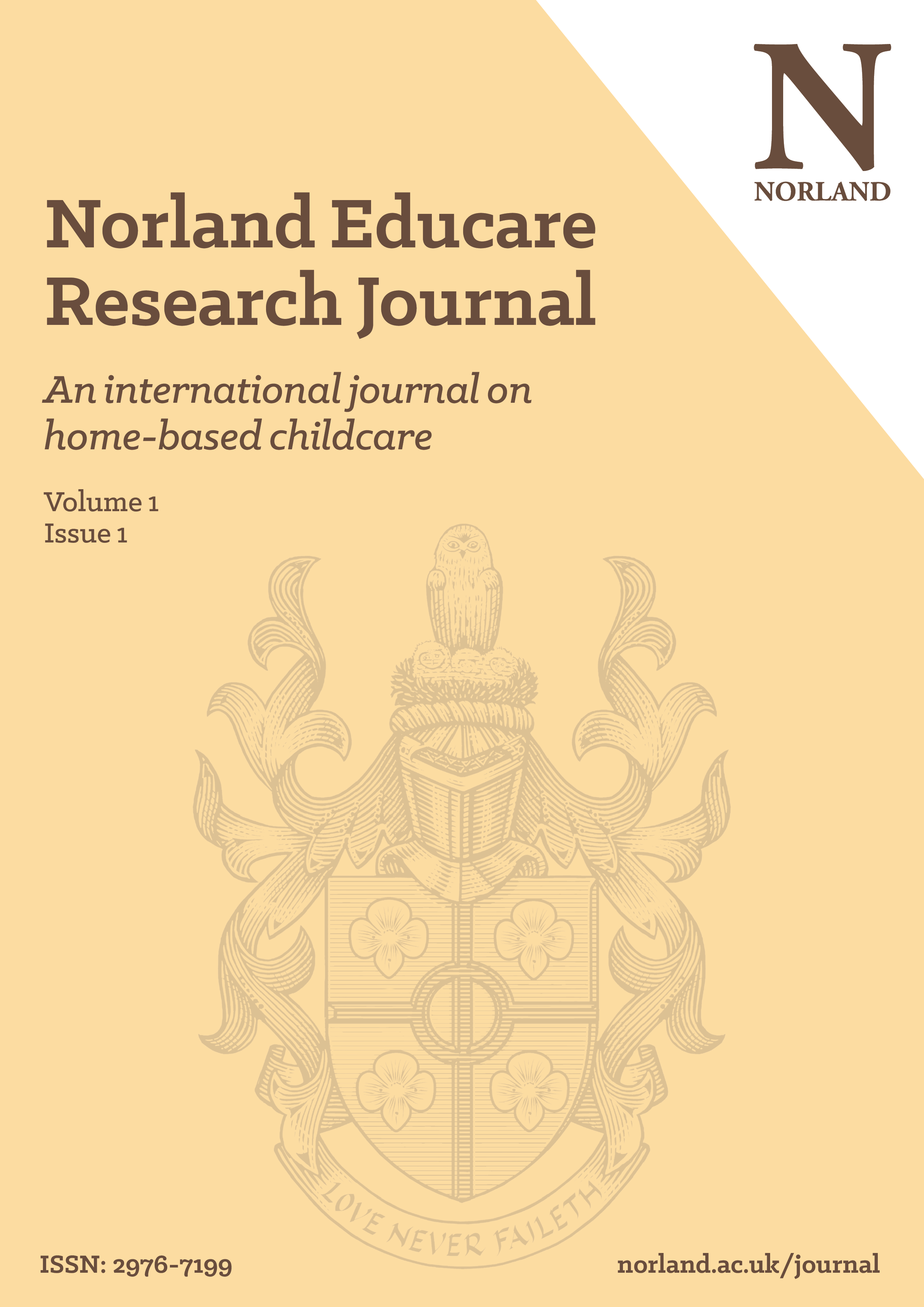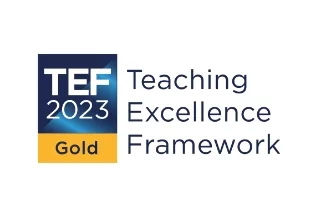Home visiting to support early childhood care and development: challenges and opportunities in sub-Saharan Africa
Back to Norland Educare Research Journal
About the journal
Read more about the journalEditorial board
View our editorial boardJournal policies and ethics
View our policies and ethicsPeer review process
View peer review processInformation for readers
Read our information for readersInformation for authors
Read our information for authorsCall for papers
View our call for papersTerms and conditions
View terms and conditionsAbstract
The global pandemic has highlighted the inadequacies of centre-based provision for children in sub-Saharan Africa and beyond. Most young children in sub-Saharan Africa reside with families, and delivery of services in the home is becoming increasingly important. In pre-pandemic times, home visiting programmes surfaced as a modality to support young children and families in disadvantaged contexts. In current times, this modality continues to be underdeveloped and trapped in the broader challenges of making early childhood care and education public provision. The aim of this paper is to engage with challenges and opportunities in home visiting directed at supporting early childhood care and education. In so doing, a call is made for more structured government support to enable the development of high-quality home visiting programmes.
Keywords: home visiting, sub-Saharan Africa, disadvantaged context, public provision, service delivery
Introduction
Young children growing up in vulnerable circumstances need holistic early childhood interventions. Considering the uncertainties brought about by the Covid-19 pandemic, early childhood interventions are urgently needed. Over time, the call for these has been supported by research on brain development, child development environments, childhood adversities and resilience-building in early childhood care and education (ECCE) (Shonkoff and Levitt, 2010; Eiden et al., 2020). While evaluations of early childhood interventions show positive outcomes for children and their families, the high variability of interventions due to complexity and diversity continues to challenge efforts for scalability and sustainability (Shonkoff, 2016). The search continues for effective modalities to intervene in the lives of young children and their families.
Home visiting has been used as a preventative strategy to curb risk and build protective factors in ECCE. This modality in service provision is designed to address a host of issues, including supporting pregnant mothers, infant health and nutrition, early learning, and prevention of child abuse (Peacock et al., 2013; Ebrahim et al., 2011). Home visiting is well established in rich countries. Duffee et al. (2017) noted that the development of this modality is due to advancements in programme design, evaluations and funding, especially for the health sector. The evidence-based programmes employ both licensed health professionals and trained paraprofessionals such as community health workers, who are recruited from the communities they service. In well-designed home visiting programmes, the work of the home visitors in communities and private homes is guided by centralised and comprehensive service plans (Boller et al., 2010).
In sub-Saharan Africa, the home visiting modality has been developed on a needs basis and is largely unsystematic (Gwele and Ebrahim, 2019). Historically and currently, non-profit organisations have a significant presence in early childhood service provision for children from birth to school-going age (Williams and Samuels, 2001; Ncama, 2005; UNESCO Global Education Monitoring Report Team, 2021). Governments in Africa have largely concentrated on primary and secondary education and of late the scale-up of at least one year of pre-primary education. Since the majority of children in Africa reside with families, the gap in family-centred service provision, especially for those who are poor and vulnerable, has led to further exploration of the effectiveness of home visiting.
In a randomised controlled pilot study in Rwanda (Barnhart et al., 2020), a Sugira Muryango home visiting intervention was undertaken with 38 families for the early childhood development of and prevention of violence against children aged between 6 and 36 months. The findings showed that children in the experimental group were exposed to more engagement through early stimulation and nurturing care. There was also a reduction in harsh disciplinary actions from adults. In Kenya, an evaluation was undertaken of a home visiting programme that used a team approach and had been developed to enable families and communities to encourage pregnant adolescent girls and mothers to use health and social services (Levy et al., 2021). Using a quasi-experimental design, the study involved 384 pregnant adolescent mothers (10–19 years old), and the findings showed an increase in household support, from 57% to 85%. The majority of participants (94%) delivered their children under skilled care. Family planning rose from 39% to 64%.
The aim of this paper is to highlight the challenges and opportunities when home visiting is used in ECCE in sub-Saharan Africa. It is envisaged that the issues raised in this paper will contribute to debates, policies and implementation plans. This response is particularly important as sub-Saharan Africa engages in Africa-based regional convenings with government and civil society organisations, as well as global advocacy efforts and learning exchanges for action, such as the Global Initiative to Support Parents.
Challenges
The challenges in using the home visiting modality in sub-Saharan Africa are largely due to ECCE being driven in the informal sector by non-profit organisations. The reliance on foreign funding brings particular conceptualisations of working with families and communities. These conceptualisations are built on imported models that are adapted to the local context. For example, the Nurse–Family Partnership model from the United States used home visitors to intervene in the lives of expectant caregivers, first-time caregivers and families that were poor and vulnerable. In South Africa, this model surfaced as an alternative to ECCE centre-based provision with the addition of democratic practices driven by the communitarian concept of ubuntu (Newman, 2007). While helpful in paying attention to some local knowledge, adaptations to home visiting models were problematic (Diema Konlan et al., 2021).
According to Durlak and DuPre (2008), attempting to meet the requirements of a model will not necessarily result in the positive effects that have been found in evaluations of the model carried out in the place that it originated from. For full benefit, however, the home visiting should be aligned strongly with the original programme model. The home visitors should be qualified. The duration, frequency, intensity and content of home visiting all need attention to inform the implementation and quality of services. All these aspects are influenced by local contextual realities. In East Africa, for example, it was found that the desired frequency and scale of home visiting was absent, although the home visitors were being paid (Nyangara et al., 2009). Problems can also arise due to a lack of understanding of the realities on the ground. Okwany (2016), in her analysis of ECCE services in Kenya and Uganda, contended that they lacked contextual responsiveness to the experiences of caregivers and local communities. There are also other forces that influence the extent to which adaptations to models are possible. Political, economic and sociocultural forces all impact on interventions at the local level (Gwele and Ebrahim, 2019).
The home visitor plays a critical role in the success of the programme. Home visiting in sub-Saharan Africa is carried out by volunteers, underpaid workers and a paraprofessional workforce. Home visitors are predominantly women from poor communities. In their study on the practices of early childhood development practitioners in the home visitor workforce in poor communities in South Africa, Ebrahim et al. (2010) noted the following challenges: poor pay depending on donor funding for large volumes of work, inadequate training, low status compared to centre-based practitioners, dealing with managers who viewed home visitors as competitors in service provision, and slow responses from departmental officials. For primary healthcare in Ghana, Diema Konlan et al. (2021), in their study on home visiting in a poor rural district, noted challenges in the following aspects: the attitude and education of community members, problematic logistics, lack of funding, poor supervision, heavy workloads for a limited number of staff, and a lack of incentives to motivate high performance. Other challenges included geographical isolation, which required home visitors to walk long distances, and affordability of transport, where it was available (Thurman et al., 2013).
Opportunities for a way forward
The global pandemic has brought about many uncertainties. Children and families continue to experience stress and anxiety as they grapple with the new normal. Henderson et al. (2022, p. 213) argued that despite the stresses, “the resilience, tenacity and sheer courage” of the ECCE sector had helped to develop some new avenues. These included contextualisation of early learning opportunities, low-cost digital gateways to reach households and new partnerships for community outreach.
It is clear that for home visiting to flourish, there needs to be strong government action. Ring-fenced government funding needs to be directed towards building ECCE systems that are resilient and able to handle shocks of uncertainty in pandemic times and beyond. As part of a multisectoral system, home visiting programmes should be collaborative and well coordinated. At the outset, this can be achieved nationally through building evidence using scoping reviews and other related research methodologies to find out what exists in the local context. Such an undertaking would be valuable as it would bring together programmes from different providers into a coordinated system. This system could evolve through analysing the effectiveness of ECCE home visiting programmes, removing the administrative barriers that create stumbling blocks for access to home visiting services and designing relevant services that are in keeping with the changing needs of young children and their families. Rather than siloed home visiting programmes run by non-profit organisations, a network of service providers from health, social development, education and special needs, among other things, should be created to work with government. Inter-ministerial and inter-sectoral forums, where government ministries meet civil society organisations and the private sector, are valuable for charting new possibilities.
In rich countries, home visiting programmes receive funds if there is evidence of rigorous evaluations. It is through the trail of evidence that judgement is passed on the successes of programmes. In sub-Saharan Africa, although there are some randomised controlled trials and evaluations with some documentary evidence, evidence for action is problematic. For the non-profit sector, evidence is produced to satisfy donor reporting requirements. Government systems are not necessarily designed for data input on all ECCE modalities of service delivery. Data use for planning and implementation in ECCE is yet to be fully developed.
Where home visiting becomes a recognised modality and is well supported by the government, then competent monitoring and evaluation systems should be in place. Ideally, the monitoring and evaluation function should be located in the presidency. These systems are essential in developing policies, action plans and programmes. The data generated can address home visiting accountability issues. To link home visiting to quality outcomes for young children and families at risk, it is imperative that evaluations cover the outcomes of home visiting services in terms of the difference they have made to children’s development and learning, as well as changes that have occurred in parents’ knowledge, skills and behaviours. With regard to service provision, Kidman et al. (2014) stated that it is also important to look at how home visiting is structured for family-centred support and the sources from which the content for the programme is drawn.
Concluding remarks
Taking into account the high vulnerabilities of families and young children in sub-Saharan Africa, intensive home visiting programmes can have many positive impacts. They can serve as a means to achieve healthy child development, strong parenting skills and good maternal health. The positive outcomes from well-structured home visiting programmes can result in a reduction in mental health issues, antisocial behaviour and use of social welfare services. In sub-Saharan Africa, a government-driven and government-funded agenda to develop ECCE as a public service would mean greater possibilities for comprehensive programming and would enable multiple modalities for service delivery. The home visiting modality needs to be part of programmes in a well-structured system with a suitably qualified workforce who are well paid and have the capacity to deliver contextually responsive services in homes with different family structures.
Declaration of authorship and conflict-of-interest statement
The author confirms that this is their own work and there are no known conflicts of interest, financial or non-financial, associated with this publication.
References
Barnhart, D. A., Farrar, J., Murray, S. M., Brennan, R. T., Antonaccio, C. M., Sezibera, V., Ingabire, C., Godfroid, K., Bazubagira, S., Uwimana, O., Kamurase, A., Wilson, B., Rawlings, L. B., Yousafzai, A. and Betancourt, T. S. (2020) ‘Lay-worker delivered home visiting promotes early childhood development and reduces violence in Rwanda: a randomized pilot’, Journal of Child and Family Studies, 29(7), pp. 1,804–1,817.
Boller, K., Strong, D. A. and Daro, D. (2010) ‘Home visiting: looking back and moving forward’, Zero to Three, 30(6), pp. 4–9.
Diema Konlan, K., Kossi Vivor, N., Gegefe, I., Abdul-Rasheed, I. A., Esinam Kornyo, B. and Peter Kwao, I. (2021) ‘The practice of home visiting by community health nurses as a primary healthcare intervention in a low-income rural setting: a descriptive cross-sectional study in the Adaklu District of the Volta region, Ghana’, The Scientific World Journal. Available at: https://doi.org/10.1155/2021/8888845
Duffee, J. H., Mendelsohn, A. L., Kuo, A. A., Legano, L. A. and Earls, M. F. (2017) ‘Early childhood home visiting’, Pediatrics, 140(3). Available at: https://doi.org/10.1542/peds.2017-2150
Durlak, J. A. and DuPre, E. P. (2008) ‘Implementation matters: a review of research on the influence of implementation on program outcomes and the factors affecting implementation’, American Journal of Community Psychology, 41(3–4), pp. 327–350.
Ebrahim, H. B., Killian, B. and Rule, P. (2011) ‘Practices of early childhood development practitioners for poor and vulnerable children from birth to four years in South Africa’, Early Child Development and Care, 181(3), pp. 387–396.
Eiden, R. D., Godleski, S. A., Colder, C. R., Livingston, J. A., Leising, M. C. and Leonard, K. E. (2020) ‘Early childhood risk and protective factors predicting resilience against adolescent substance use’, Adversity and Resilience Science, 1(2), pp. 107–119.
Gwele, M. and Ebrahim, H. B. (2019) ‘Challenges in implementing a home visiting model for early childhood development in South Africa’, in H. B. Ebrahim, A. Okwany and O. Barry (eds) Early childhood care and education at the margins: African perspectives on birth to three. London/New York: Routledge.
Henderson, L., Bussey, K. and Ebrahim, H. B. (2022) ‘Afterword’, in L. Henderson, K. Bussey and H. B. Ebrahim (eds) Early childhood education and care in a global pandemic: how the sector responded, spoke back and generated knowledge. London: Routledge, pp. 211–222.
Kidman, R., Nice, J., Taylor, T. and Thurman, T. R. (2014) ‘Home visiting programs for HIV-affected families: a comparison of service quality between volunteer-driven and paraprofessional models’, Vulnerable Children and Youth Studies, 9(4), pp. 305–317.
Levy, M., Duffy, M., Pearson, J., Akuno, J., Oduong, S., Yemaneberhan, A., Coombs, A., Davis, N., Yonga, I. and Kerubo Mokaya, R. (2021) ‘Health and social outcomes of HIV‐vulnerable and HIV‐positive pregnant and post‐partum adolescents and infants enrolled in a home visiting team programme in Kenya’, Tropical Medicine & International Health, 26(6), pp. 640–648.
Ncama, B. P. (2005) ‘Models of community/home-based care for people living with HIV/AIDS in Southern Africa’, Journal of the Association of Nurses in AIDS Care, 16(3), pp. 33–40.
Newman, M. (2007) Family and community motivators: the front line of support for vulnerable young children. Cape Town: Early Resource Learning Unit.
Nyangara, F., Thurman, T. R., Hutchinson, P. and Obiero, W. (2009) Effects of programs supporting orphans and vulnerable children: key findings, emerging issues, and future directions from evaluations of four projects in Kenya and Tanzania. Chapel Hill, NC: MEASURE Evaluation.
Okwany, A. (2016) ‘“Every mother dances her baby”: contextually responsive narratives of early childhood care and education in Kenya and Uganda‘, South African Journal of Childhood Education, 6(2), article number 464. Available at: http://dx.doi.org/10.4102/sajce.v6i2.464
Peacock, S., Konrad, S., Watson, E., Nickel, D. and Muhajarine, N. (2013) ‘Effectiveness of home visiting programs on child outcomes: a systematic review’, BMC Public Health, 13, article number 17.
Shonkoff, J. P. (2016) ‘Capitalizing on advances in science to reduce the health consequences of early childhood adversity’, JAMA Pediatrics, 170(10), pp. 1,003–1,007.
Shonkoff, J. P. and Levitt, P. (2010) ‘Neuroscience and the future of early childhood policy: moving from why to what and how’, Neuron, 67(5), pp. 689–691.
Thurman, T. R., Kidman, R. and Taylor, T. (2013) The impact of paraprofessional versus volunteer-driven home visiting programs on the wellbeing of orphans and vulnerable children: evidence from a longitudinal evaluation in KwaZulu-Natal, South Africa. New Orleans, Louisiana: Tulane University.
UNESCO Global Education Monitoring Report Team (2021) Right from the start: build inclusive societies through inclusive early childhood education. Policy paper. Available at: https://unesdoc.unesco.org/ark:/48223/pf0000378078 (Accessed: 28 July 2022).
Williams, T. and Samuels, M. L. (2001) The nationwide audit of ECD provisioning in South Africa. Pretoria, South Africa: The Department of Education.
Related articles
Front matter and content page: Norland Educare Research Journal
The Norland Educare Research Journal is an international double-blind peer-reviewed journal, published annually, online only. It is an open access journal, offering free-of-charge publication to researchers and authors, and free...
Editorial – Home-based educarers: powerful agents who cannot be neglected!
Home-based childcare, in the form of childminding and nannying, is a vital service to families (Ang et al., 2017). It is mainly used by families, such as those in rural...
Useful links and information for the Norland Educare Research Journal
About the journal
Read more about the journalEditorial board
View our editorial boardJournal policies and ethics
View journal policies and ethicsInformation for readers
View information for readersInformation for authors
View information for authorsCall for papers
View call for papersTerms and conditions
View terms and conditions



Translate this page